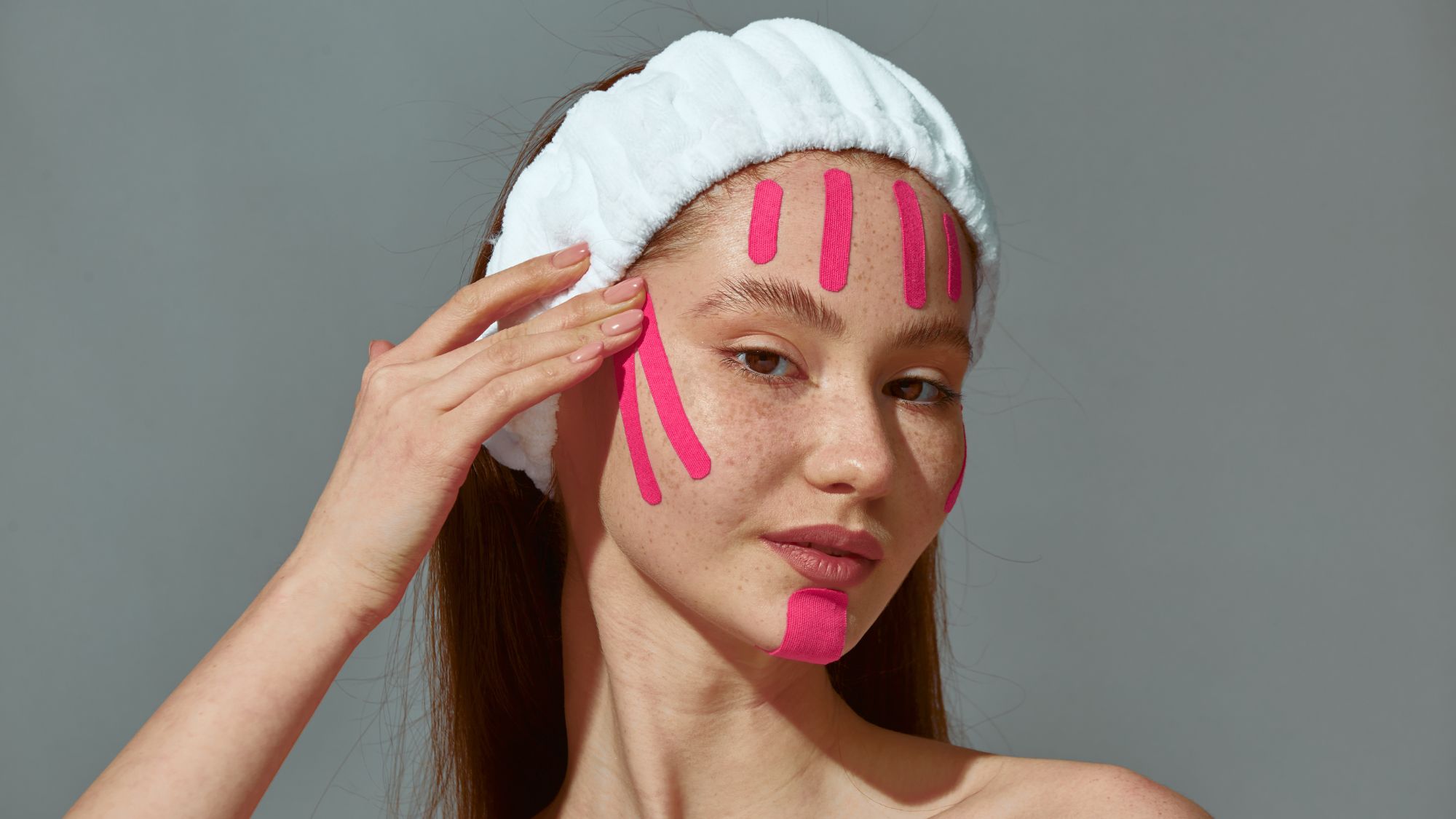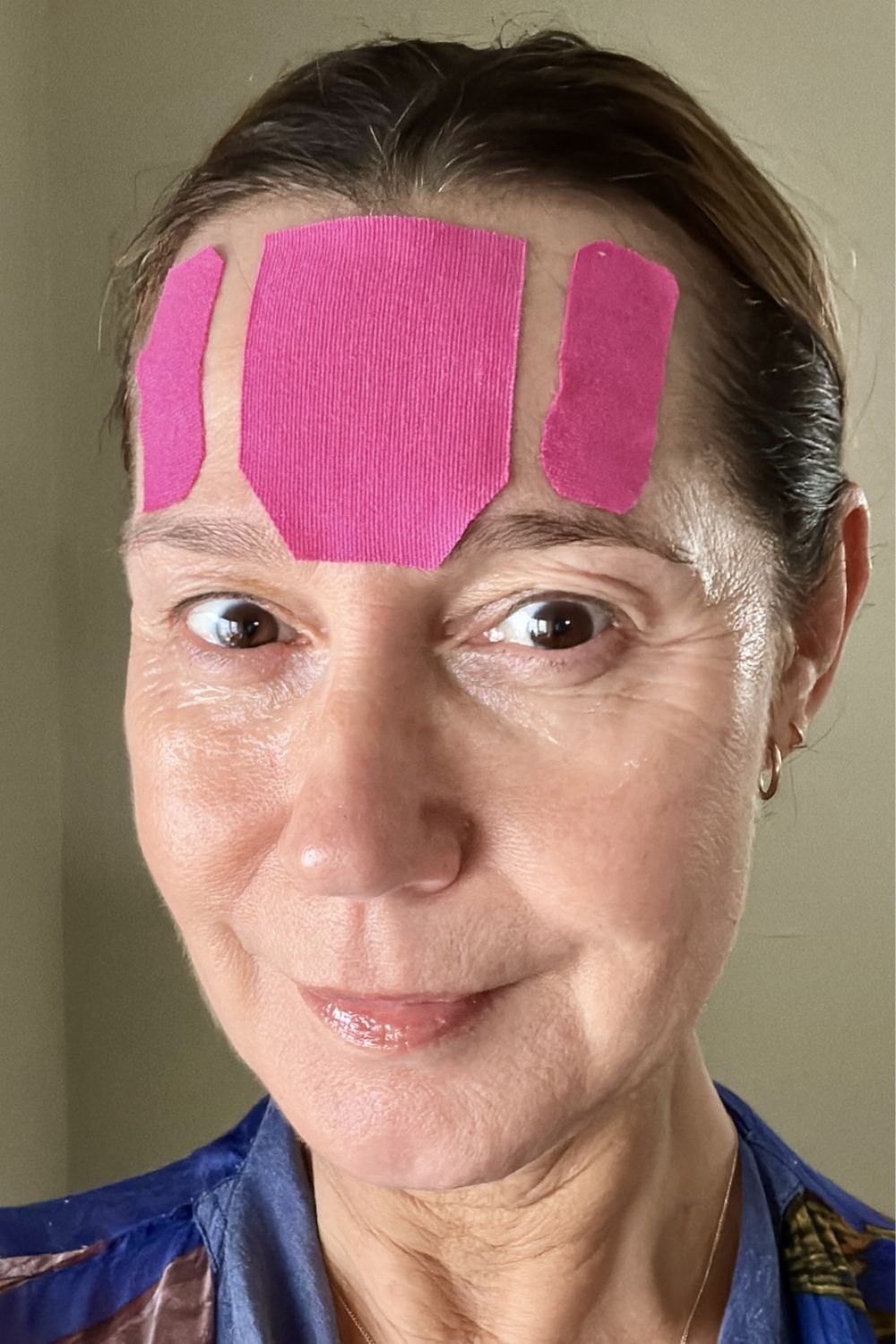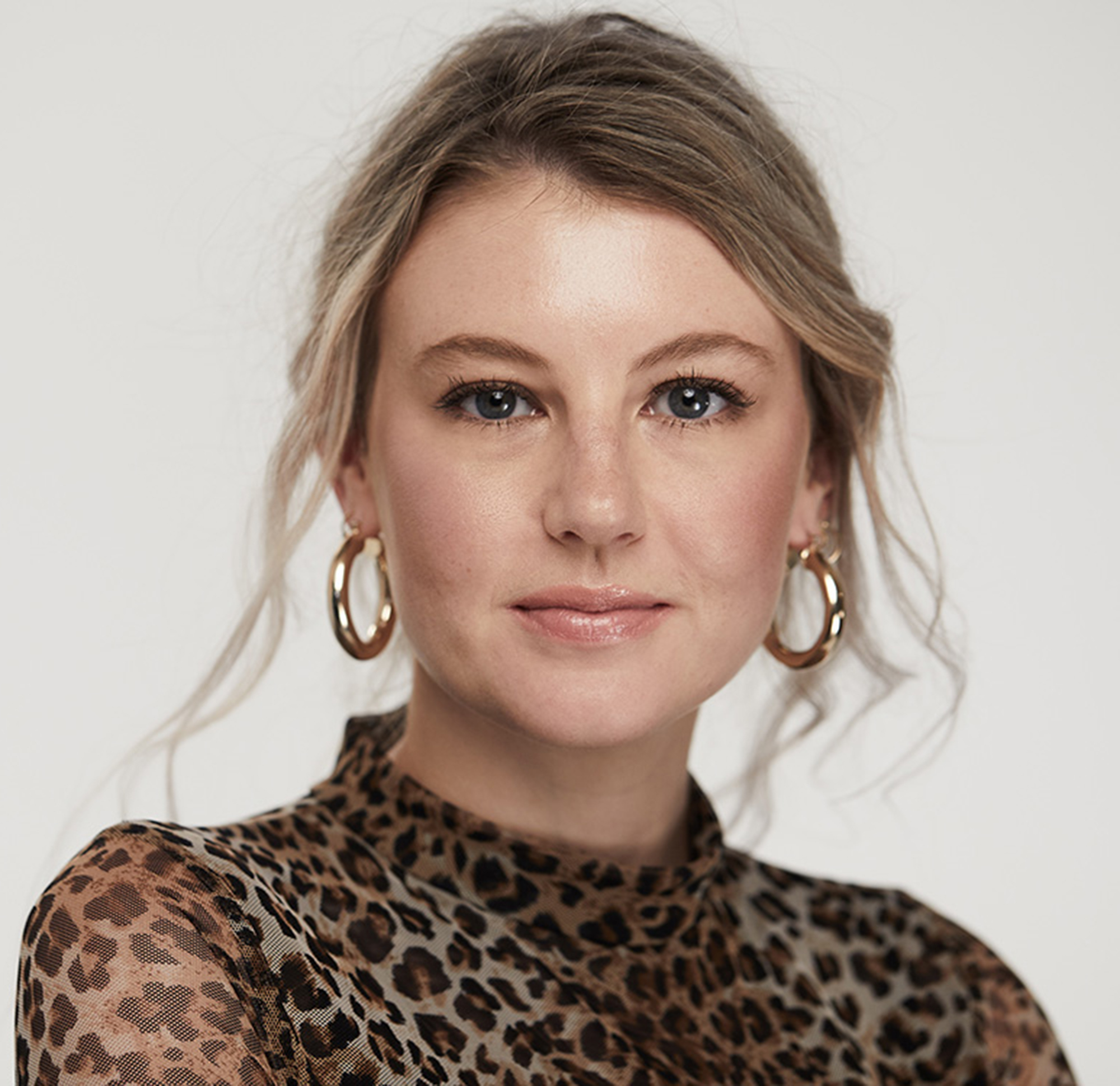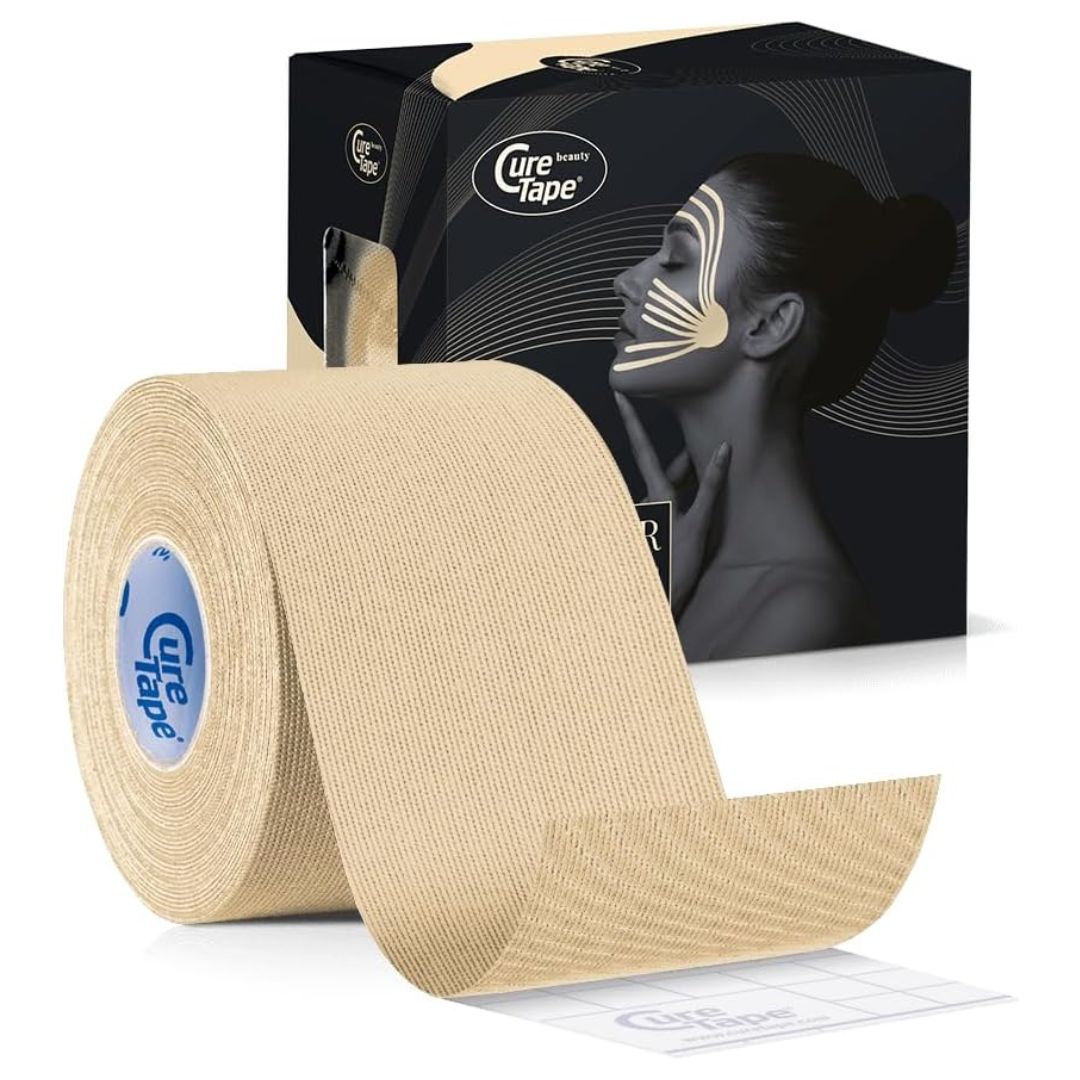As Someone Seriously Considering Botox, Is Face Taping A Viable Alternative? Here's What I Found Out
Needle-free option


I am in my late thirties and up until about a year ago, Botox was a hard no from me. But not for the reasons you might expect. You see, I'm not against it in the slightest, quite the opposite in fact, I have a pretty major fear of needles, paired with an embarrassingly low pain threshold. But, recently, the desire for a more lifted look, with a touch of softening of my fine lines, has become quite strong. Strong enough for me to seriously consider it, despite my dread.
However, a recent scroll on my social feeds seemed to present me with an alternative: face taping. Seen by some as a non-invasive way of reducing the appearance of fine lines and wrinkles on the face, my needle-phobic self was intrigued. So I asked the experts whether this was, in fact, a viable alternative.
Dr Alexis Granite is a Consultant Dermatologist who offers Neurotoxin (of which Botox is the most well-known brand) to her clients at her clinic at the Skinesis Medical at Sarah Chapman. Justine Masters, known as The Alternative Facialist, is a holistic facialist and a huge advocate of face taping. Here's what they had to say...
What is face taping?
Face taping is exactly what it sounds like. It's a technique that involves applying adhesive tape, in particular kinesiology tape, to the skin on the face to prevent movement. This is done mostly at night, whilst we sleep. "The idea [...] is it restricts facial muscle movement, thereby reducing the formation of fine lines and wrinkles which develop from repeated motion," says Dr Granite. "It’s promoted as a non-invasive method to achieve a more youthful look overnight," Masters adds. There are a number of places you can apply it, but it works best on places that need lifting: the forehead, around the eyes, nasolabial folds (your smile lines on either side of your mouth) and on the jawline. "By limiting repetitive motions (like frowning or squinting) during sleep, which we do most of the night," Masters explains. "The tape can prevent the formation or deepening of fine lines and wrinkles. I also like to use it to gently lift the skin, promoting the idea of improved circulation and lymphatic drainage."
Whilst it is particularly popular at the moment (especially amongst the TikTok content creator community who show off their daily shed), using tape in such a way isn't new. You've probably seen professional athletes or runners in your local park, with brightly coloured tape attached to parts of their body; it's essentially the same thing. Using tape to hold muscles in place, it's just that theirs is to help support the body and prevent injury.
How to apply face tape
Masters says to do your nighttime skincare routine, as normal, about half an hour before applying your tape to allow it to sink in.
You can either pre-cut your pieces of tape or you can also get pre-made, like Face Gyms.
Celebrity news, beauty, fashion advice, and fascinating features, delivered straight to your inbox!
Decide on the area (or areas) you want to tackle—forehead, 11 lines (in between your brows), on the outer edges of your eyes, jawline—then gently stretch the skin before placing the tape to create a slight lift. "Never stretch the tape," Masters warns, as this can pull on the skin and cause damage.
Leave on for a few hours or overnight, depending on comfort and skin sensitivity, then remove slowly and carefully to avoid irritation.

Justine Masters wearing face tape on her forehead to tackle horizontal and 11 lines
Does face taping actually work?
Interestingly, I assumed that Dr Granite would brush face taping off as a fad, but she didn't. "Face taping can be modestly helpful in breaking habits, such as furrowing your brow, which may help reduce lines over time." However, she was quick to point out that these results aren't long-lasting. "The slight compression achieved via facial tape may lead to temporarily smoother or more lifted skin, but the key word here is temporary." Botox (or Botulinum toxin) can last from three to six months, so it's a more effective, longer-term solution.
Masters reiterates this, but is keen to stress that skin appears smoother the next day and claims that with recurrent use, it can help to retrain the muscles, as they remember. "Consistency is key," she says. "Build up to five times a week." She also likes to combine face taping with a radiofrequency device to help relax the muscles.
A post shared by Justine Masters | The Alternative Facialist (@thealternativefacialist)
A photo posted by on
Are there any risks with face taping?
There are no major risks involved with face taping; however, both experts say that skin irritation may occur. Masters explains that it can "cause redness, dry skin or even dermatitis over time, especially if you have a barrier issue or super sensitive skin."
Human error may also cause problems. The most common mistake that Masters sees is people not removing the tape properly and ripping it off roughly, which can obviously cause irritation.
So, is face taping better than Botox?
While Masters doesn't comment on whether face taping is better than Botox, she does say that it provides an alternative for people not wanting to go down the injectable route. She says so because there will be an "increased effect over time when paired with effective skincare."
Realistically, you cannot compare the two. "Unfortunately, the efficacy of face tape cannot approach that of neurotoxins, such as Botox," says Dr Granite. "Neurotoxins work by inhibiting signalling from nerve cells to muscle fibres well below the dermis, and have long-lasting effects in paralysing or limiting muscle movement. Facial tape works on the surface exclusively, and while taping may prevent muscle movements temporarily, it will not impact deeper wrinkles or improve collagen production." She doesn't recommend facial taping, but says that it can work effectively for a short-term solution before special occasions.

Katie Thomas is the Senior Beauty Editor at Marie Claire UK. With over 10 years of experience on women's luxury lifestyle titles, she covers everything from the best beauty looks from the red carpet and stand out trends from the catwalk, to colonic irrigation and to the best mascaras on the market.
